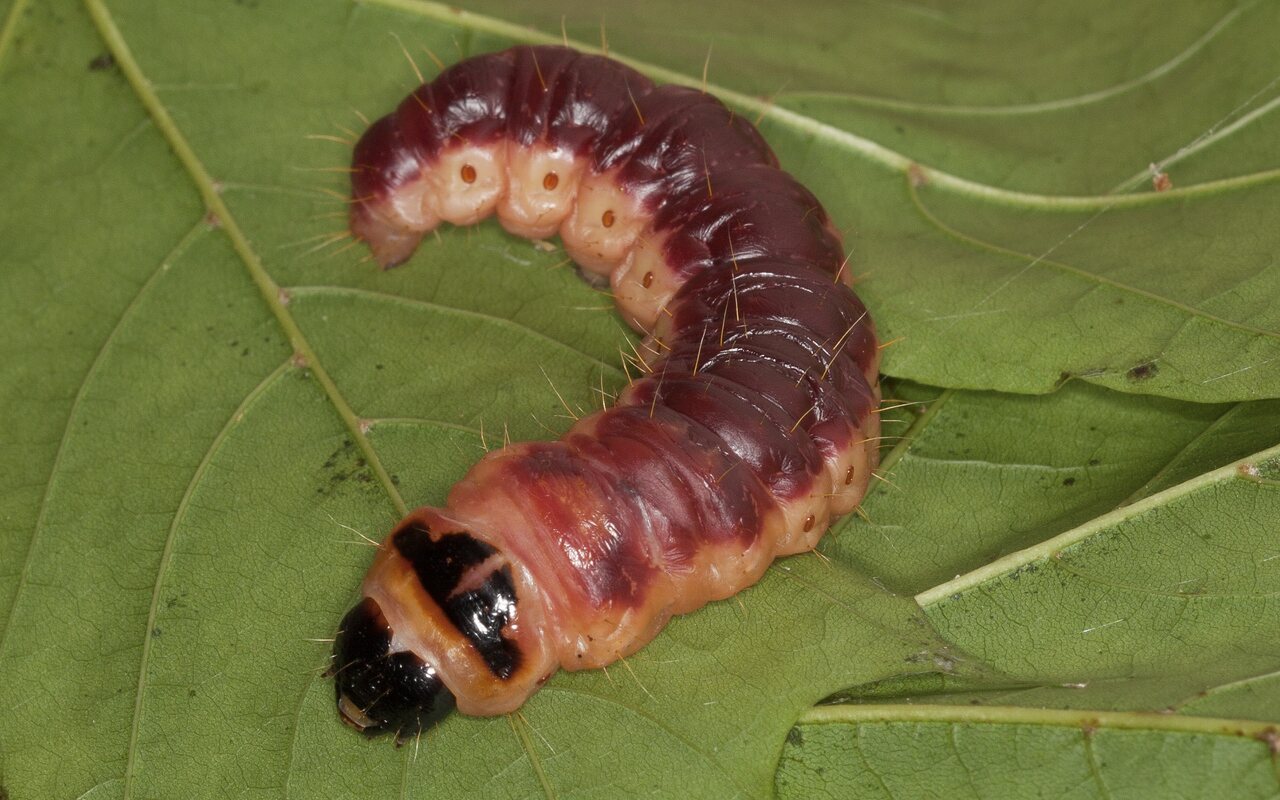
Cossus cossus caterpillar · kvapusis medgręžis, vikšras
- goat moth
- Weidenbohrer
- vītolu urbējs
- kvapusis medgręžis, gluosninis medgręžis
- trociniarka czerwica
https://en.wikipedia.org/wiki/Cossus_cossus It is found in Northern Africa, Asia and Europe. The caterpillars feed in the trunks and branches of a wide variety of trees, taking three to five years to mature. This is a large heavy moth with a wingspan of 68–96 mm. The wings are greyish brown and marked with fine dark cross lines. The moth flies from April to August depending on the location.
The caterpillars have a red/purple stripe across the back and a black head. They reach a length of 9–10 cm. The caterpillars feed in the trunks and branches of a wide variety of trees (see list below), taking three to five years to mature. The caterpillar holes can be found low on the stem (maximum 1.0–1.5 m above the ground). When ready to pupate the caterpillar leaves the tree to find a suitable spot.
The species prefer humid environments. Both the larva and moth have a smell reminiscent of goat, hence its name.
‥
0 comments
Add a comment